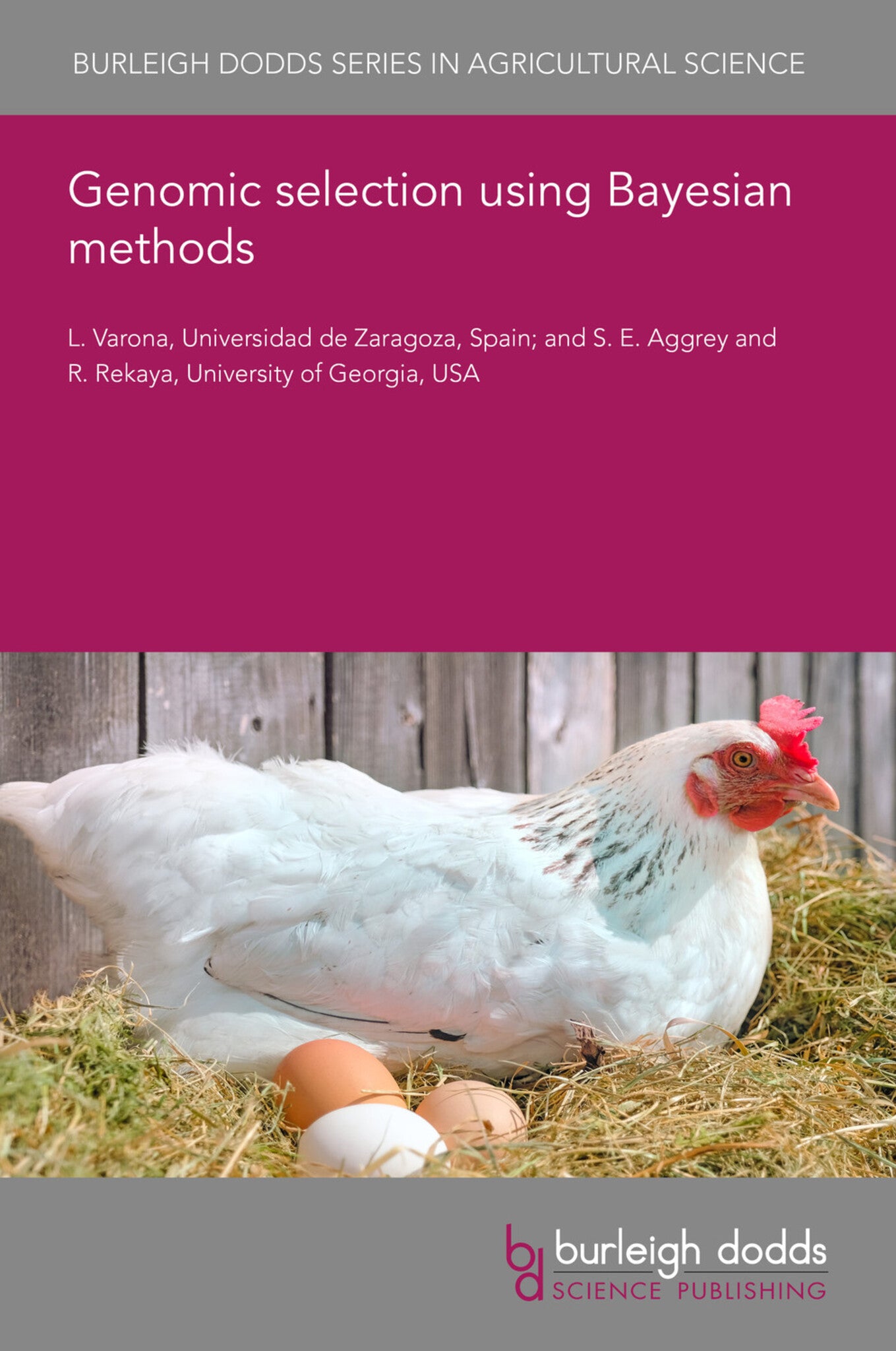We're sorry. An error has occurred
Please cancel or retry.
Genomic selection using Bayesian methods
Regular price
£25.00
Sale price
£25.00
Regular price
£25.00
Unit price
/
per
Sale
Sold out
Re-stocking soon
For decades, the method of choice the prediction of breeding values in poultry breeding programs was the Best Linear Unbiased Prediction (BLUP). More recently, genomic selection is quickly becoming...
Read More

Some error occured while loading the Quick View. Please close the Quick View and try reloading the page.
Couldn't load pickup availability
- Format:
-
20 July 2020

For decades, the method of choice the prediction of breeding values in poultry breeding programs was the Best Linear Unbiased Prediction (BLUP). More recently, genomic selection is quickly becoming the standard tool for genetic evaluation. One of the main challenges in the implementation of genomic selection is that the number of variants, mainly Single Nucleotide Polymorphisms (SNPs), in the association model are far greater that the number of phenotypic records leading the well know large p, small n problem. Bayesian inference provides powerful tools to circumvent this problem through the assumption of appropriate prior distributions for the unknown parameters in the association model. In this chapter, the most frequently used prior distributions in the implementation of genomic selection using regression models are reviewed. Additionally, Bayesian strategies to accommodate non-additive effects and non-parametric approaches to predict future performance for purebred and crossbred individuals are discussed.

Price: £25.00
Publisher: Burleigh Dodds Science Publishing
Imprint: Burleigh Dodds Science Publishing
Series: Burleigh Dodds Series in Agricultural Science
Publication Date:
20 July 2020
ISBN: 9781786767813
Format: eBook
BISACs:
TECHNOLOGY & ENGINEERING / Agriculture / Animal Husbandry, Poultry farming, TECHNOLOGY & ENGINEERING / Agriculture / Sustainable Agriculture, Sustainable agriculture, Animal breeding

1 Introduction 2 Genomic selection (GS) 3 Using Bayesian approaches 4 Continuous and discrete mixing of Gaussian distributions 5 Incorporating additional prior information and allowing for linkage disequilibrium and non-additive effects 6 Crossbreeding models 7 Non-parametric approaches 8 Conclusions 9 Where to look for further information 10 References



